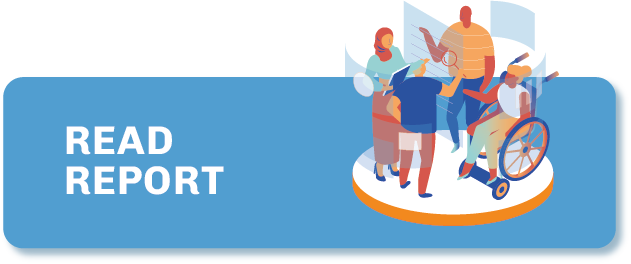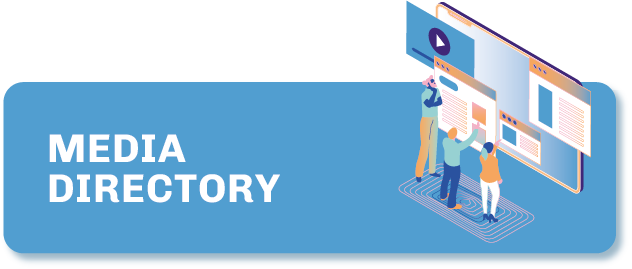Poland
A politically polarised society with an increasing demand for news, coupled with solid economic growth, has made Poland a place where new digital native media outlets are flourishing. They do so despite a toxic political climate, the government’s capture of public media, structural assaults on independent private media outlets that criticise the government, regional media buyouts, and the boosting of private media organisations that are friendly to the government through state funds.
GENERAL INFORMATION
Press
freedom
ranking
Internet
penetration
POPULATION
Media organisations
in the Directory
TYPE OF COVERAGE

TYPE OF ORGANISATION

GENDER OF FOUNDERS

Press freedom
Since 2015, Poland has witnessed unprecedented democratic backsliding under a conservative government, including concerted threats to media freedom and pluralism. The Polish media market has been impacted by political factors such as the political capture of media regulators and public media (both broadcast and internet), increased politicisation of private media ownership and buyouts of regional media by government-controlled companies, and obstacles to private media outlets’ criticising of the government, such as threats of non-renewal of licences, planned new taxes, threats of interference in media ownership structures, and legal actions by government-friendly entities aimed at intimidating “the fourth estate”, including SLAPPs (strategic lawsuits against public participation).
Moreover, in 2020 during large protests against curbs to women’s rights, some journalists were pepper-sprayed and detained by the police. All these phenomena cumulatively impacted negatively on media freedom. On Reporters Without Borders’ Press Freedom Index, Poland fell from 18th position in 2015 to 66th place in 2022. Around 37% of Poles express low or no trust in the media, according to a study by the European Broadcasting Union.
Market structure and dominance
Poland’s private media market is diverse and dominated by independent media outlets. The largest private broadcast media groups are locally-owned Cyfrowy Polsat, whose news programming is more lenient towards the government, and US-owned TVN Warner Bros. Discovery, which is highly critical of the government. The main horizontal portals are Onet (owned by Ringier Axel Springer Polska), Wirtualna Polska (owned by local shareholders) and Interia (belonging to Cyfrowy Polsat).
Among print media publications, tabloids Fakt (owned by Ringier Axel Springer Polska) and Super Express (owned by ZPR Media Group) have the biggest circulation. Opinion-forming national legacy newspapers (Rzeczpospolita, Gazeta Wyborcza) and magazines (Polityka, Tygodnik Powszechny) remain independent. In 2021, state-run oil refiner PKN Orlen acquired the largest regional daily newspaper group Polska Press from the German Verlagsgruppe Passau. Successful independent digital-only media non-profit organisations rely on advertising (300gospodarka) or donations (OKO.press).
How media is funded
Poland’s PiS government increased spending on public television, which under its management has been accused of acting as a propaganda machine. Three-quarters of public television costs are covered by licence fee revenue, while the rest is covered by compensation from state funds for lost revenue due to the non-payment of licence fees by viewers. In 2022, the subsidy for public television and radio amounted to up to PLN 1.95 billion (EUR 414.8 million), compared to PLN 980 million (EUR 227.1 million) in 2017.
The government distorts the media market by lavishly supporting friendly private media organisations with public funds, through advertisements and partnerships sponsored by state-controlled companies. According to one independent study, the pro-government weekly magazine Sieci received 31% of its advertising revenue in 2020 from government-controlled state companies, while the daily Gazeta Polska Codziennie received 29% in 2020 and 53% in 2019.
Legacy newspapers deprived of advertising revenue from state-controlled companies have accelerated digitalisation and experimented, often successfully, with different funding models including digital subscriptions (for example Gazeta Wyborcza).
The growth of major horizontal portals, which have been built around email service providers and which rely on income from advertising, has led them to invest in quality journalism, hiring top investigative journalists and columnists. Public interest journalism portals published by non-profit organisations have also emerged, developing varied financing models including regular donations from readers, without paywalls. Following the mass sacking of experienced radio journalists from the public media sector, some have had great success running crowdfunded podcasts, or grouping together to set up independent internet radio stations.
Twelve profiles of digital native media organisations from Poland are included in the directory. This includes eight profiles based on interviews and four profiles based on desk research.
This research has found that strong polarisation of Polish society over government policies has boosted demand for independent, quality public interest journalism. Poles’ income and purchasing power had been increasing until 2022. The Covid-19 pandemic created an even greater need for news, especially in the digital media space. These factors created conditions for certain private media outlets to flourish.
New digital native media outlets successfully operating in Poland have varied funding models, from advertising, paywalled content, corporate event sponsorship and consultancy services to individual and regular donations, memberships and crowdfunding campaigns. Grants from international donors are an important part of non-profit media budgets; these include grants from philanthropic organisations or clusters of them supporting the media, European Union grants and big tech journalism support programmes. Foreign grants are crucial, as under the current government media outlets critical of the government are unlikely to receive funding from public coffers.
All the interviewed media outlets have developed a strong presence on various social media channels, which generate a significant part of website traffic. Many of the organisations that specialise in analysis have also developed podcasts in addition to their primary text-based materials (for example Polityka Insight, Kultura Liberalna), and are venturing into more multimedia formats, promoted on YouTube (Klub Jagiellonski) or Instagram (OKO.press). Most of the media organisations publish one or several newsletter formats. Media organisations need to adapt to fast-changing social media habits of their audiences; Facebook is popular among older demographics, while younger ones prefer Instagram, YouTube or TikTok as a source of news.
There are several donation-based or membership-funded podcasts and online streaming radio stations created by former well-known public radio journalists made redundant after the current PiS government took power (Raport o Stanie Świata, Radio 357, Radio Nowy Swiat). Podcast hosts (Raport o Stanie Świata, Dział Zagraniczny) and reporters’ collectives (Outriders) answer listeners’ demands for high-quality reporting on foreign affairs. Fact-checking has gained in popularity as a format (OKO.press, Konkret24).
Several opinion-forming online magazines have developed around intellectual circles that represent diverse political currents (for example, left-leaning Krytka Polityczna, liberal centre-leaning Kultura Liberalna, conservative centre-right Klub Jagiellonski); these have also been collaborating, publishing each other’s work through Project Spięcie (“short circuit”), in order to burst news bubbles. This is also seen as a way of opposing the toxic politicisation of certain legacy newspapers and magazines in Poland that are viewed as vehicles for the opposition, clearly supporting certain parties or candidates.
Last updated: January 2023
CREDIT FOR STATISTICS: Press Freedom statistics, RSF Press Freedom Index 2022; Internet penetration and population statistics, from Internet World Stats

